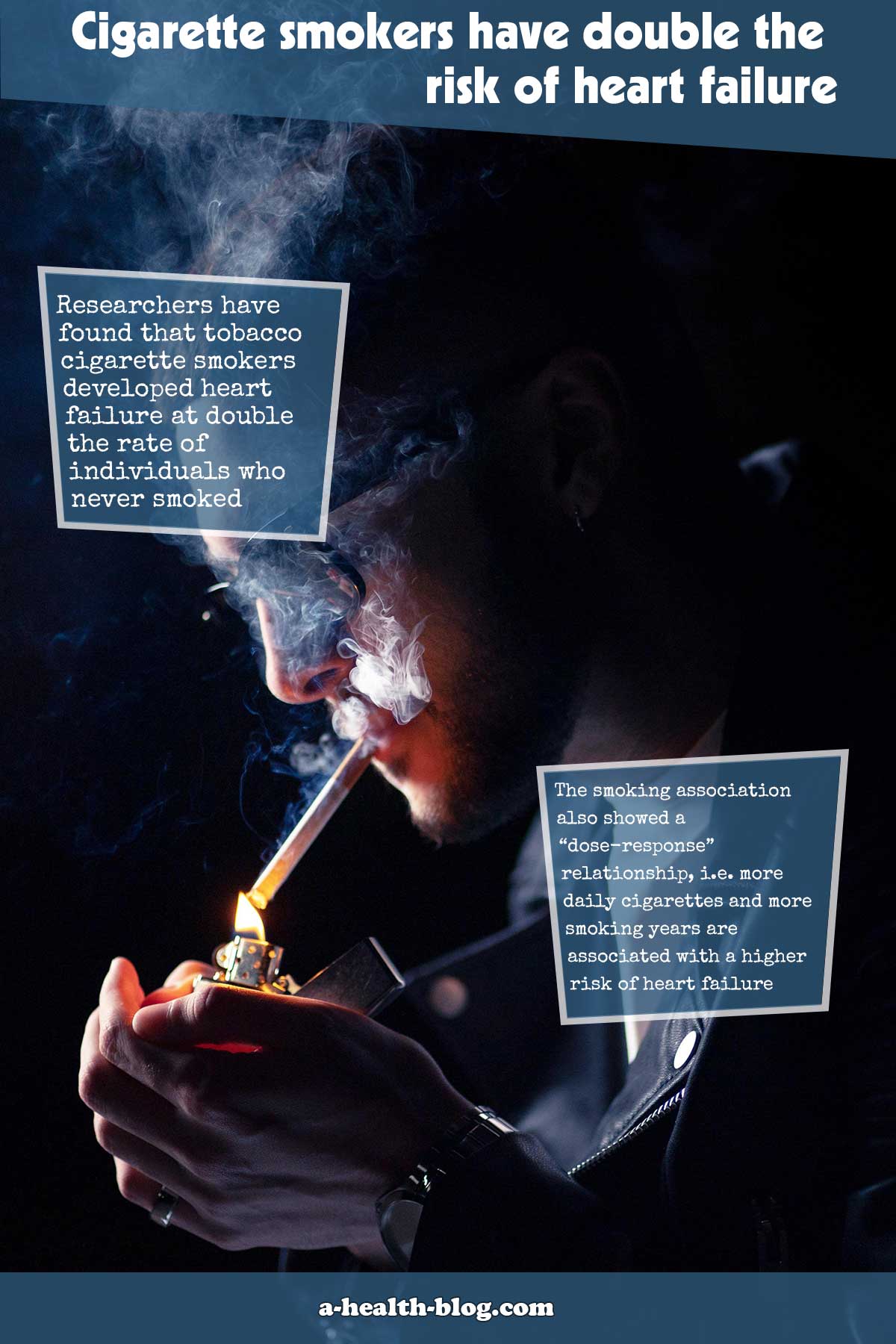Researchers have found that tobacco cigarette smokers developed heart failure at double the rate of individuals who never smoked. This higher rate took place in 2 major heart failure subtypes and confirms that smoking cigarettes poses a significant risk factor for both subtypes.1✅ JOURNAL REFERENCE
DOI: 10.1016/j.jacc.2022.03.377
Data from a long-term study of almost 9,500 participants from 4 U.S communities were analyzed for this study. It was found that individuals who had quit smoking retained a significantly increased risk of both heart failure types for many years after they’d quit smoking.
Heart failure is a condition where the heart loses the ability to pump adequate blood to meet the needs of the body. It’s one of the most common reasons for death and disability in first-world countries, with over 6 million individuals in the U.S. alone living with heart failure according to the CDC’s latest data. Apart from smoking cigarettes, risk factors for heart failure include advanced age, coronary artery disease, diabetes, hypertension, and obesity.
There are 2 types of heart failure: preserved ejection fraction and reduced ejection fraction. Reduced ejection fraction heart failure is more closely associated with coronary artery disease. Reduced ejection fraction treatment includes various prognosis-improving medications. In reduced ejection fraction heart failure, the left ventricle fails to adequately contract when pumping blood outward.
The left ventricle doesn’t adequately relax after contracting in preserved ejection fraction heart failure. Preserved ejection fraction heart failure treatment is very limited, and the risk factors are also less clear, which makes its prevention crucial. Although some previous research has associated smoking with a higher risk of preserved ejection fraction, other studies haven’t.
Health data of individuals participating in the Atherosclerosis Risk In Communities study were looked at. The Atherosclerosis Risk In Communities study started in 1987 and consists of middle-aged and older individuals with a significant Black individual representation. The analysis for this current study included data from 4 communities and focused on 9,345 individuals between the ages of 61 and 81 who participated in the Atherosclerosis Risk In Communities study with sufficient data and no heart failure diagnosis at the beginning of 2005.
There were 1,215 heart failure cases over an average follow-up period of 13 years, which included 555 preserved ejection fraction cases and 492 reduced ejection fraction cases. The analysis revealed that smokers had been diagnosed with the 2 subtypes of heart failure at approximately the same elevated rates in comparison to individuals who had never smoked, with a 2.16 times higher rate for reduced ejection fraction and a 2.28 times higher rate for preserved ejection fraction.
The smoking association also showed a “dose-response” relationship, i.e. more daily cigarettes and more smoking years are associated with a higher risk of heart failure. Likewise, stopping smoking produced a reduction in the risk of heart failure that increased with time. Former smokers generally had a 31% and 36% more chance of having preserved ejection fraction and reduced ejection fraction, respectively, in comparison to never-smokers.
The overall risk of heart failure for former smokers remained significantly higher compared to the risk of those who had never smoked, apart from the individuals that hadn’t smoked for 30 years or longer.






